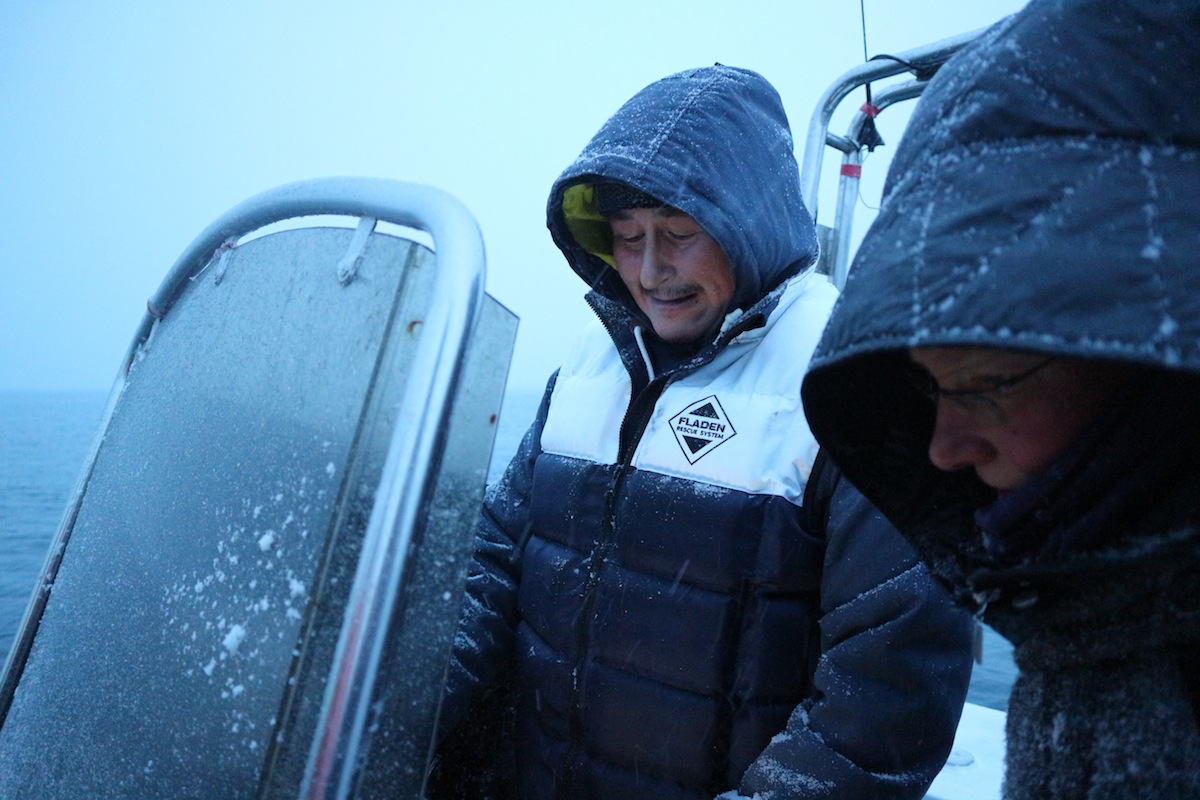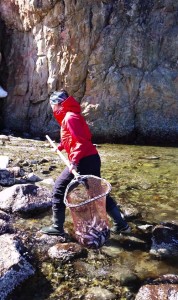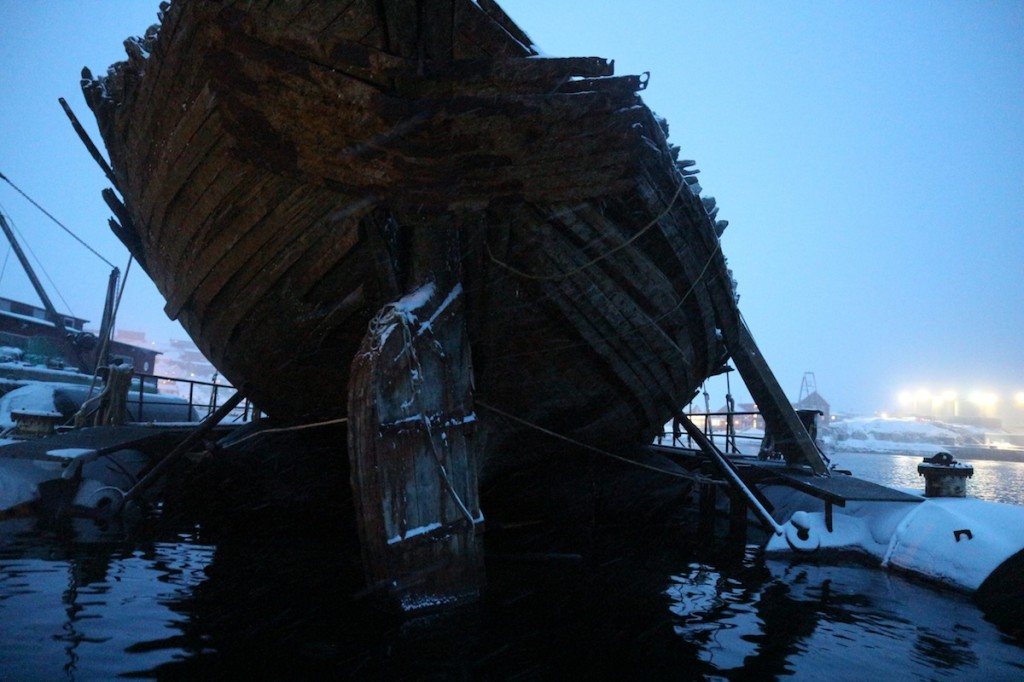First published on 12/10/2017, and last updated on 02/16/2018
Throughout 2017 Snowchange, Greenlandic partners, Skolt Sámi and the Danish NORDECO partnered on a Nordic Council -sponsored project “eXchanging Knowledge”. The purpose of the process was to find new, direct ways of expressing Indigenous and local-traditional knowledge, as well as support direct exchanges between hunters, fishermen, women, reindeer herders, managers and researchers. One of the outcomes of the process is a new website: “Snowchange Archive of Visual Histories” that will be updated through the year.
At the eXchanging Knowledge Workshop 2017 held in Aasiaat, December 2017 methods of inclusion of local, traditional / Indigenous knowledge of the boreal and Arctic communities into monitoring and observation of ecosystems was discussed and reviewed. Participants included Greenlandic hunters, fishermen, research scientist and managers, Finnish fishermen and restoration specialists as well as Skolt Sámi knowledge holders from Finland.
Deepening Voices Report captures the results of the Nordic cooperation and the key messages from the participating regions. We are thankful to all co-authors, sponsors, participants and their families for achieving this goal. Especially Snowchange would like to thank Halfdan Pedersen for the translations and Indigenous knowledge reviews.
- The Arctic and the boreal are changing in profound and new ways. Dynamic governance and community-based and –meaningful responses are urgently needed to address this ‘new normal’. Sea ice change, warmer winters, impacts to fish stocks, mammals and birds are all examples of this, providing complex new realities that the marginalised Indigenous and local-traditional communities often face first. Yet in most cases they have the least resources at their disposal.
- Indigenous and traditional knowledge is a meaningful, but under-used method in monitoring and observing northern ecosystems. PISUNA project, oral and visual histories, land use and mapping as well as community-based and –guided video projects are suitable tools to convey messages of status, change and trends. Community-led work can contribute positively to the self-esteem, -capacity, responsibily and pride of the participants. Free, Prior and Informed Consent-FPIC should be the established standard for all such initiatives.
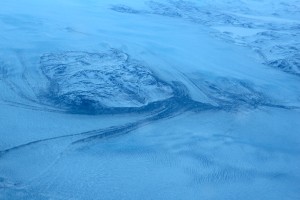
- Indigenous and local-traditional communities in the European North have self-governed natural resources on their own terms for thousands of years. A classical example is the Sámi siida system, a family-based use of lands and waters that contained mechanisms for nature conservation, self-limiting of catches and direct resource management based on the community needs and interests. Modern governance of, for example fish, marine mammals and other renewable resources should include and embrace this Indigenous and local-traditional governance to the best extent possible. The Näätämö river co-management model of the Skolt Sámi and the PISUNA work in Greenland are examples of Nordic Good Practices towards achieving these targets.
- Indigenous and local-traditional –led monitoring has the capacity to lead to a community-led restoration of lost or damaged habitats in tandem with science, as has been documented in the Jukajoki case, North Karelia, Finland. Replication of this model has a great potential in the boreal and the North. In order to be meaningful this work needs the resources for success especially in the village level.
- Great benefits can be achieved if communications between the communities, managers and the governments are enhanced. A two-way exchange of acknowledging observations back to the communities, and improvements in the ways agencies interact with villages will further enhance effectiveness and equity. Success criteria for collection, inclusion or recognition and use of local knowledge should be further described. Attention should be given to the formulation of criteria that incorporate the different points of view on success, so that all participants are aware of when the goal is reached.
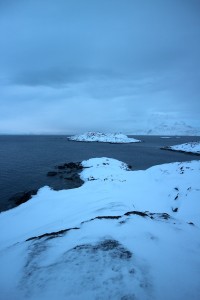
- The impacts of monitoring and management of natural resources and ecosystems in Greenland and Finland can be improved by further enhancing culturally and gender appropriate approaches. The involvement of women, children, Elders, schools as well other special stakeholders, often excluded, should feel welcome and to be able to contribute to the future of similar initiatives.
We in Snowchange between 2000-2018 have worked with dozens of communities and hundreds of knowledge holders. eXchanging Knowledge actions in 2017 re-affirmed our belief that Northern local-traditional and Indigenous communities have “visual histories”, their own ways of recording and interpreting their lands, changing weather and distinct cultures. New methods are needed.
Therefore we are unveiling today a website, developed in partnership with the PrettyGoodProductions, called “Snowchange Archive of Northern Traditions Visual Histories“. It is accessible here.
In the future these archives will become comprehensive collection of local and traditional knowledge and practices, photographs, videos, and audio material. Currently there are examples from lake Puruvesi in North Karelia, Finland and Kolyma, Siberia, but these pages will be developed over 2018. eXchanging Knowledge follow-ups will be announced later in the year.
